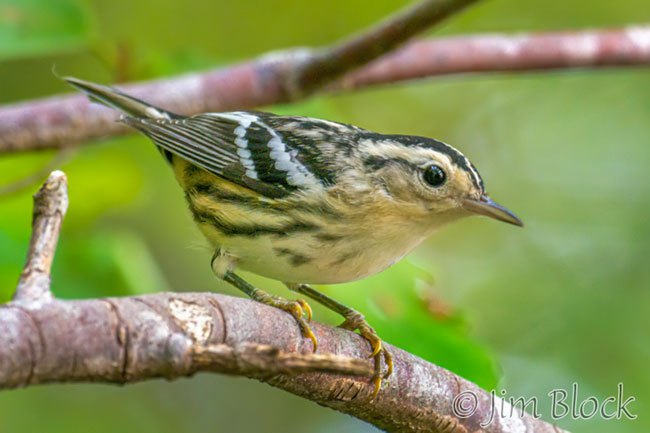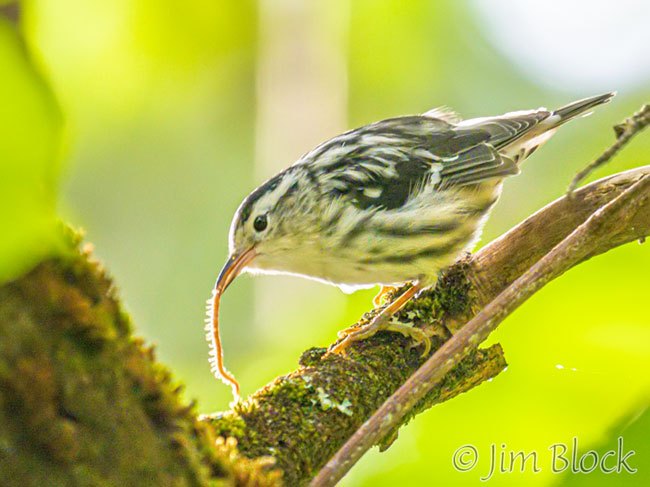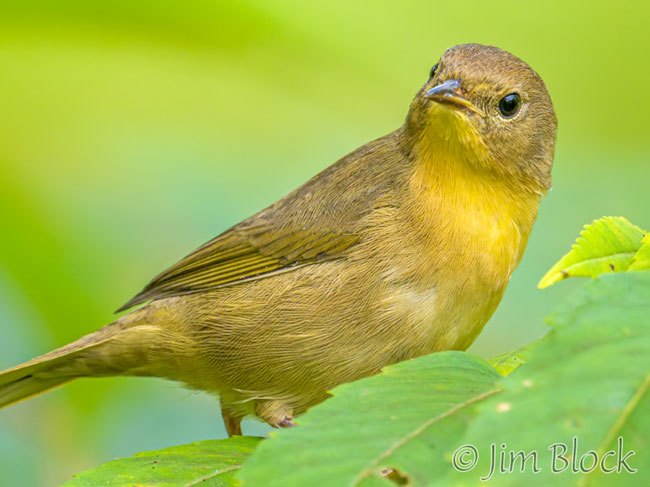


Many birds look different in fall than they do in spring. They may be immature birds, molting or nonbreeding plumage adults, or mature females of well-known species that are harder to recognize in fall. Perhaps like the three birds above. What are they? (Answers coming.)
David Sibley, an excellent ornithologist and artist, has published one of the most widely used bird identification books. He states, “identification of wood-warblers can be daunting Aug-Mar when most species show drab nonbreeding plumage”.
But there are other avian species besides warblers that can confuse in fall. I recently visited one of my favorite spots in Newport, New Hampshire for bird photography and was able to capture a variety of species with my camera.
So what are those birds at the top of this page?
The first is Northern Parula, most likely a first-year bird. I believe it is an immature female. Below is a male Northern Parula in breeding plumage in June, also photographed in Newport.

The second bird at the top of the page, which looks a bit like the first bird but without wing bars, is a female Common Yellowthroat. Here is what a male looks like in May in breeding plumage.

The third bird at the top of the page is a Chestnut-side Warbler, either a female or an immature male. Below is another Chestnut-side Warbler from the same spot in Newport the same day. I believe it is a non-breeding male.

Below, for comparison, is a male Chestnut-side Warbler in breeding plumage taken in Etna, NH in May at the King Bird Sanctuary. This is a wonderful spot, especially when the crab-apples are blooming.

Below is a warbler I got a quick shot of before it disappeared. Care to identify it?

The bird above is a female or an immature male Magnolia Warbler — they look similar. This is the case for many species. It is sometimes hard to tell the difference between females and immature males.
Below is a breeding male Magnolia Warbler photographed in May at Cricenti’s Bog in New London.

I found a non-warbler species with plumage different than most-widely recognized for the species.

The bird above is a Rose-breasted Grosbeak. I believe it is a first-year male, although it looks somewhat like a non-breeding female. Here is a male Rose-breasted Grosbeak in breeding plumage in May showing off where its name comes from.

Another species I got a photo of in Newport — just barely — is a Brown Creeper. It is one of my favorite birds, perhaps because it is such a challenge to photograph.

Here is a better photo of a Brown Creeper.

I got a very close-up photo of a somewhat ragged Black-capped Chickadee.

And an “artistic” capture of the a chickadee taking flight.

Other species present that morning in Newport were:
House Wren,
Red-eyed Vireo,
and Black-and-White Warblers, several of which had good luck catching centipedes.
Finally, some more photos of Common Yellowthroats and Chestnut-sided Warblers. You should be able to easily tell them apart now.
This first three are Common Yellowthroats and the last four are Chestnut-sided Warblers.
Corrections of any IDs are welcome. I’m a photographer mainly, still with a whole lot to learn about birds.
If you missed my Dragonfly Blog, you can read it if you CLICK HERE.




















